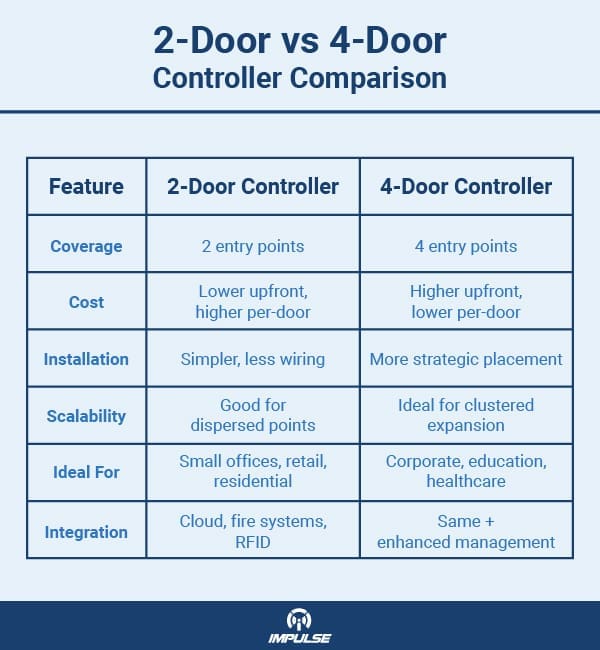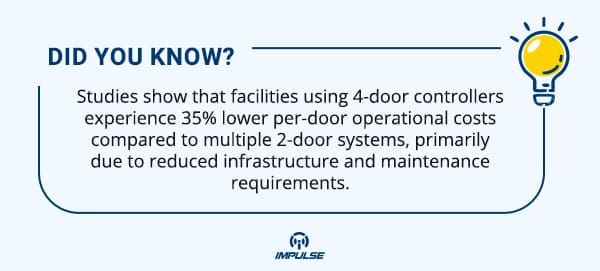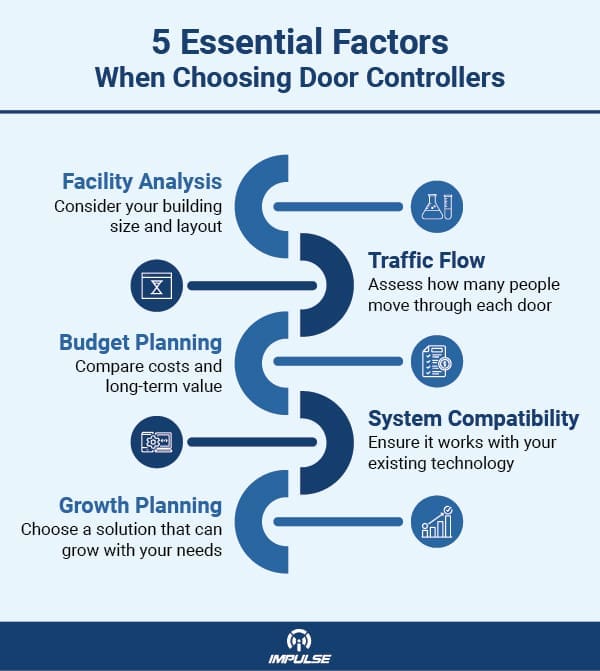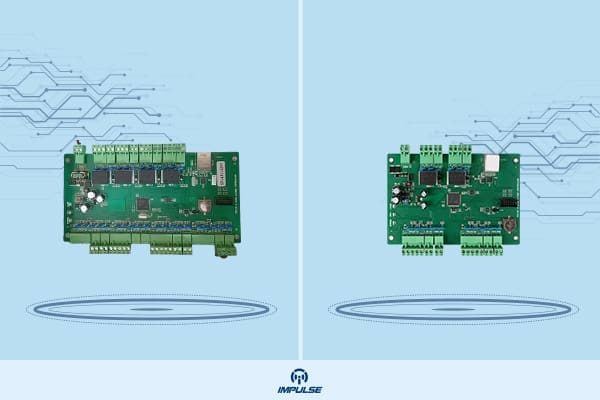The digital transformation has revolutionized how we approach security infrastructure, and access control systems are at the forefront of this evolution. As buildings become smarter and more interconnected through the Internet of Things (IoT), traditional lock-and-key mechanisms are rapidly being replaced by sophisticated, networked access control solutions. The choice between 2-door and 4-door controllers has become a critical decision point for businesses, facility managers, and security professionals seeking to implement scalable access control solutions that can adapt to the demands of modern smart buildings.

The IoT Revolution in Access Control Systems
The convergence of IoT technology with access control systems has created unprecedented opportunities for enhanced security, operational efficiency, and centralized management. IoT-enabled door controllers are no longer just about restricting access; they’ve evolved into comprehensive security ecosystems that provide real-time monitoring, analytics, and seamless integration with other building management systems.
Modern access control systems leverage cloud connectivity, mobile integration, and advanced authentication methods to create a security infrastructure that’s both robust and user-friendly. The transition from standalone door entry systems to networked access control platforms represents a fundamental shift in how organizations approach facility security.
The choice between 2-door and 4-door access controllers becomes crucial when considering factors such as building layout, traffic patterns, budget constraints, and future expansion plans. Understanding these variables is essential for making an informed decision that aligns with both immediate security needs and long-term operational objectives.
Understanding 2-Door vs 4-Door Controller Architectures
2-Door Controller Systems: Precision and Efficiency
Two-door access control systems offer a streamlined approach to managing entry points with focused functionality and cost-effectiveness. These systems are ideal for smaller facilities, specific zones within larger buildings, or applications where dedicated control over limited access points is required.
The TCP/IP Two Doors Access Control System exemplifies modern 2-door controller capabilities, featuring multi-computer management, regional interlocking, and fire linkage functionality. This system integrates seamlessly with cloud platforms, enabling remote monitoring and management while maintaining robust local processing capabilities.
Key advantages of 2-door controllers include simplified installation, reduced infrastructure requirements, and optimized performance for smaller-scale applications. They’re particularly effective in scenarios such as office suites, retail locations, or residential buildings where controlling access to two strategic points provides comprehensive security coverage.
4-Door Controller Systems: Scalability and Comprehensive Coverage
Four-door access control systems represent the next tier in scalable access control solutions, designed for facilities requiring broader coverage and more complex access management scenarios. These systems excel in environments such as corporate offices, educational institutions, healthcare facilities, and industrial complexes where multiple entry points need coordinated management.
The TCP/IP Four Doors Access Control System demonstrates the advanced capabilities of 4-door controllers, incorporating the same sophisticated features as 2-door systems but with expanded capacity and enhanced management capabilities. The ability to control four doors from a single controller unit reduces infrastructure complexity while providing comprehensive coverage.

Choosing the Right Access Control Solution for Your Needs
Facility Assessment and Requirements Analysis
The decision between 2-door and 4-door controllers should begin with a comprehensive assessment of your facility’s current and future needs. Consider factors such as building size, traffic patterns, security requirements, and growth projections. Smart access control systems must align with your operational workflows while providing room for future expansion.
Evaluate the physical layout of your facility to determine optimal controller placement. For buildings with clustered entry points, a 4-door controller might provide more efficient coverage and reduced cabling requirements. Conversely, facilities with dispersed access points might benefit from multiple 2-door systems strategically positioned throughout the building.
Integration Capabilities and IoT Ecosystem Compatibility
Modern access control systems must integrate seamlessly with existing security infrastructure and emerging IoT technologies. Both 2-door and 4-door controllers should support standard communication protocols, cloud connectivity, and third-party integrations to ensure compatibility with your broader security ecosystem.
Consider supplementary components such as the Switch Panel Door Exit Push Button , which provides durable stainless steel construction for reliable exit control, or the RFID Card Reader , which offers advanced RF technology with support for multiple card formats including EM4100 and MIFARE cards.

Future-Proofing and Scalability Considerations
The best access control for IoT environments is one that can adapt to changing security requirements and technological advancements. Evaluate each system’s upgrade path, expansion capabilities, and vendor support for future enhancements. IoT-enabled door controllers should provide flexible architecture that can accommodate new authentication methods, integration protocols, and security features as they become available.

Cost-Benefit Analysis and ROI Considerations
While 4-door controllers typically have higher upfront costs, they often provide better value for larger installations due to reduced per-door costs, simplified infrastructure, and consolidated management. Calculate the total cost of ownership, including installation, maintenance, and operational expenses over the system’s expected lifespan.
Consider the efficiency gains from centralized management, reduced maintenance requirements, and improved operational workflows. Multi-door access control systems often provide superior return on investment for medium to large facilities through operational efficiencies and reduced administrative overhead.
Implementation Best Practices and System Selection
Technical Specifications and Performance Criteria
When selecting between 2-door and 4-door controllers, focus on technical specifications that align with your operational requirements. Evaluate processing capabilities, memory capacity, communication interfaces, and supported authentication methods. Both controller types should support dynamic 2D code technology, fire linkage systems, and regional interlocking capabilities for comprehensive security management.
The ID Card Writer represents an essential component for facilities requiring efficient card management, offering fast reading speeds, microcomputer control, and USB compatibility for seamless data transmission without driver installation requirements.
Installation Planning and Infrastructure Considerations
Successful implementation of networked access control systems requires careful planning of network infrastructure, power distribution, and physical mounting locations. 4-door controllers may reduce overall infrastructure requirements but require strategic placement to optimize cable runs and ensure reliable communication with all connected doors.
Consider environmental factors such as temperature ranges, humidity levels, and electromagnetic interference when planning controller placement. Both 2-door and 4-door systems should be installed in locations that provide easy access for maintenance while maintaining security and environmental protection.
Maintenance and Support Strategies
Develop comprehensive maintenance protocols that address both preventive and corrective maintenance requirements. IoT access control systems require regular software updates, security patches, and performance monitoring to maintain optimal functionality. Establish relationships with qualified service providers and ensure availability of replacement components for critical system elements.
Plan for system monitoring and alerting capabilities that can proactively identify potential issues before they impact security operations. Cloud platform integration enables remote diagnostics and monitoring, reducing the need for on-site maintenance visits while improving system reliability.
Conclusion
The choice between 2-door and 4-door access controllers in the IoT era requires careful consideration of multiple factors including facility requirements, scalability needs, budget constraints, and long-term operational objectives. While 2-door controllers offer precision and cost-effectiveness for smaller applications, 4-door systems provide superior value and operational efficiency for larger or more complex facilities.
Success in implementing IoT-enabled access control systems depends on selecting the right balance of functionality, scalability, and integration capabilities. Whether choosing a 2-door or 4-door solution, focus on systems that provide robust security features, seamless IoT integration, and the flexibility to adapt to evolving security requirements.
The future of access control lies in intelligent, connected systems that provide both security and operational insights. By making informed decisions based on comprehensive facility assessment and clear understanding of available technologies, organizations can implement access control solutions that deliver immediate security benefits while positioning them for future technological advancements.
Upgrade your facility’s security with Impulse’s modern access control solutions. Our experts will help you select the ideal 2-door or 4-door controller system for your needs.


